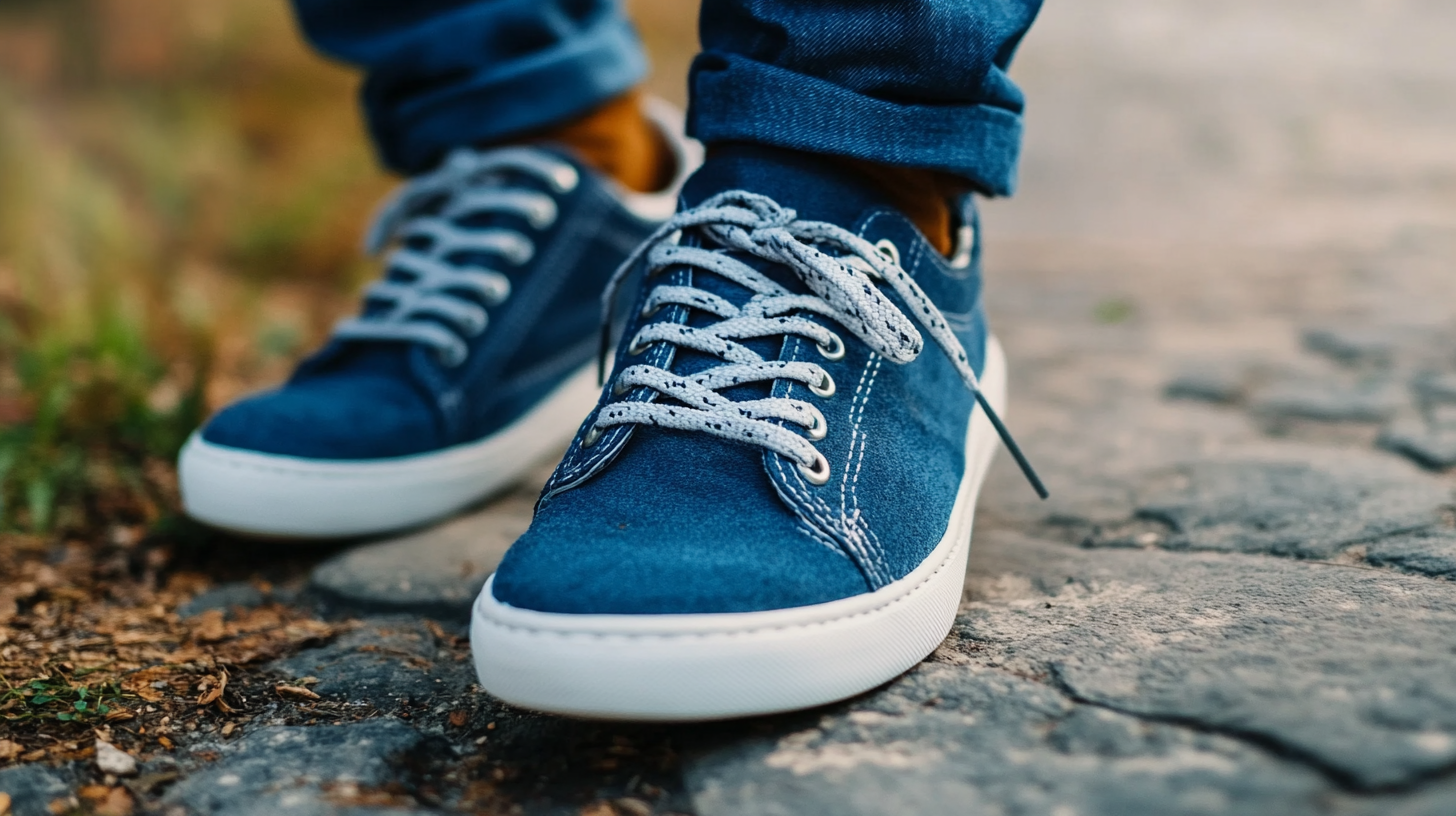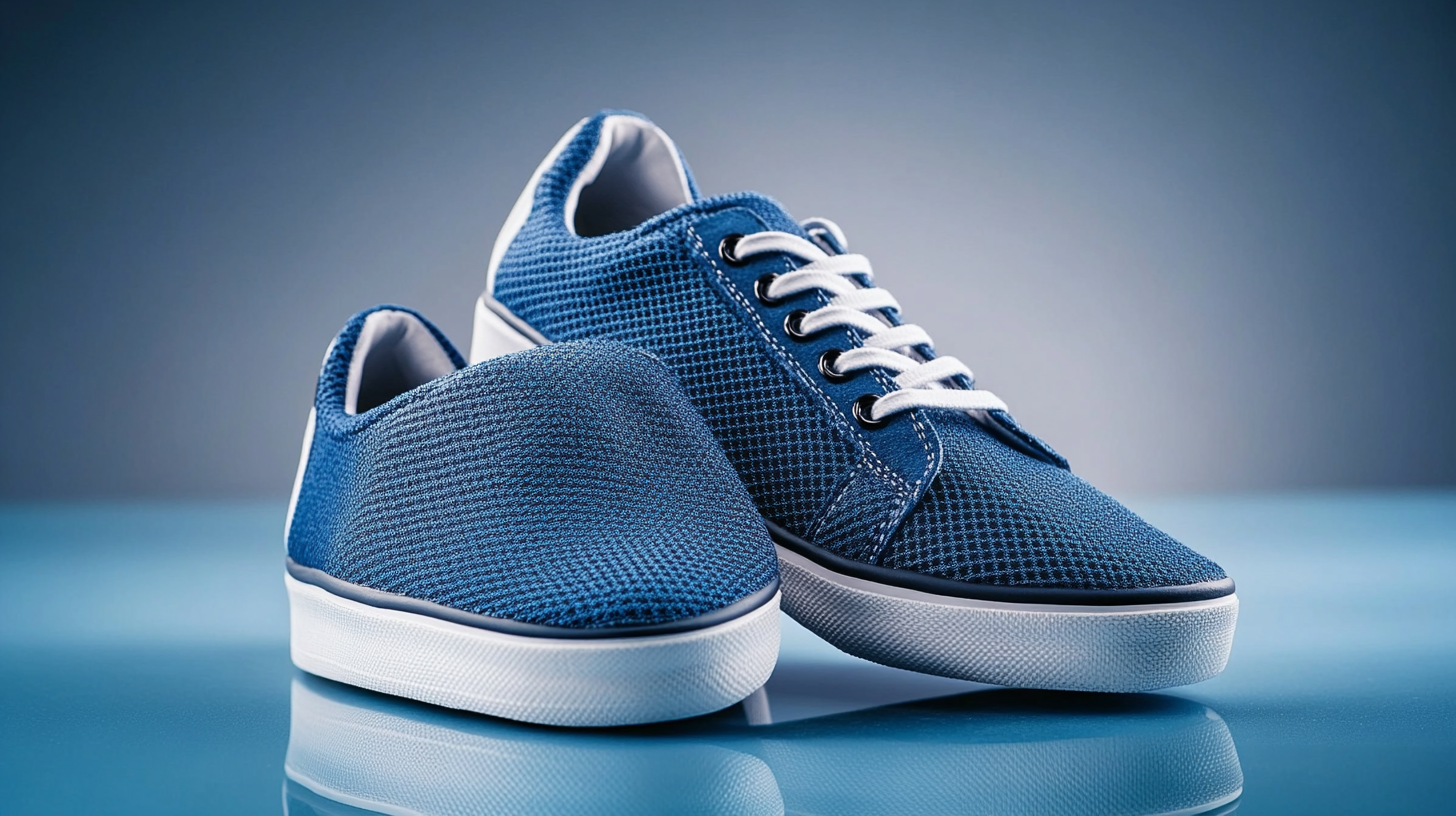
In today's fast-paced world, the demand for versatile and stylish footwear has reached unprecedented levels. According to a recent market analysis by Grand View Research, the global athletic footwear market is projected to reach USD 95.14 billion by 2025, with casual sport shoes playing a significant role in this growth. These shoes are not just reserved for the gym or running; they have become a staple for everyday wear, blending comfort with style.

With diverse applications ranging from casual outings to light sports activities, choosing the right pair of casual sport shoes requires an understanding of their features and suitability for different occasions. As consumers increasingly prioritize both functionality and fashion, it is essential to explore the secrets behind selecting the best casual sport shoes that cater to various lifestyle needs.
 As the casual sport shoes market continues to evolve, understanding the demand trends for 2025 is crucial for consumers and brands alike. According to industry reports, the global athletic footwear market is projected to reach $116.2 billion by 2025, with an annual growth rate of 5.49% until 2032. This increase highlights the growing interest in versatile footwear that blends style and functionality.
As the casual sport shoes market continues to evolve, understanding the demand trends for 2025 is crucial for consumers and brands alike. According to industry reports, the global athletic footwear market is projected to reach $116.2 billion by 2025, with an annual growth rate of 5.49% until 2032. This increase highlights the growing interest in versatile footwear that blends style and functionality.
In 2024, the global market for casual and outdoor products is forecasted to be valued at $137.7 billion, with a significant CAGR of over 5.7% anticipated through 2034. This surge is driven by a rise in outdoor activities, leading consumers to seek shoes that are not only comfortable but also adaptable to various environments.
When it comes to selecting the best casual sport shoes, understanding the importance of fit and comfort cannot be overstated. The ideal shoe should feel like a natural extension of your foot, allowing for seamless movement whether you're running errands or enjoying a day of leisure. A proper fit can alleviate discomfort and prevent injuries, making it crucial to consider your unique foot structure. For example, those with flat feet may benefit from supportive running shoes that provide the necessary arch support and stability, while individuals with high arches should look for shoes that cushion their heels effectively.
Moreover, exploring various shoe types designed for specific activities can enhance your overall experience. Sneakers that are highly rated for standing long hours or cross-training are particularly useful for those who need shoes versatile enough to transition between different scenarios. Gathering insights from expert reviews and personal foot analyses can streamline the selection process, ensuring that you not only look good but also feel great in your casual sport shoes. The right choice allows you to stay active comfortably, making every occasion a reason to step out with confidence.
| Feature | Importance | Recommendation |
|---|---|---|
| Fit | A proper fit prevents blisters and discomfort during wear. | Try shoes on with the socks you plan to wear. |
| Arch Support | Good arch support can help maintain foot stability and comfort. | Opt for shoes with built-in arch support or consider orthotics. |
| Cushioning | Adequate cushioning reduces impact on joints during activities. | Look for shoes with EVA or gel cushioning technology. |
| Breathability | Breathable materials help keep feet dry and comfortable. | Select shoes with mesh or perforated uppers. |
| Weight | Lighter shoes reduce fatigue during extended wear. | Choose shoes designed for performance and agility. |
When it comes to choosing casual sport shoes, understanding the key features tailored to different activities is crucial. Recent insights highlight that selecting the right walking shoes can significantly impact comfort and overall foot health. Footwear experts note that shoes should effectively absorb shock and provide ample arch support, reducing the risk of injuries such as knee and spinal issues. Shock absorption is particularly important, as walking generates forces that can exceed three times the body's weight, placing immense pressure on the feet.
Additionally, the type of sole and the materials used in the shoes play a vital role in their performance. For instance, a flexible yet durable sole can enhance mobility during various activities, whether it's a leisurely stroll or a more vigorous walk. Furthermore, experts recommend looking for shoes with breathable materials to promote airflow, keeping feet cool during extended periods of wear. With the growing understanding of the relationship between footwear and physical health, making an informed choice has never been more critical for those leading active lifestyles.
When it comes to purchasing casual sport shoes, brand reputation and consumer reviews play critical roles in guiding choices. Recent consumer reports have highlighted serious safety concerns regarding certain brands, illustrating the importance of due diligence in evaluating footwear. For example, a recent study by consumer protection agencies found that a popular men's casual shoe brand exceeded safety limits due to hazardous decomposable substances in its materials. Such findings underscore the necessity for consumers to prioritize reputable brands known for their commitment to safety and quality.
Industry data further reinforces this notion; a survey conducted by a market research firm indicated that 73% of consumers are significantly influenced by brand reputation when selecting casual shoes. Furthermore, platforms that aggregate consumer reviews have become invaluable resources, with 90% of online shoppers reading reviews before making a purchase decision. This trend emphasizes the vital role that transparent feedback plays in shaping consumer confidence and choice, particularly for sport shoes, which blend functionality with style for various occasions. When navigating the vast market of casual sport shoes, consumers must weigh brand integrity and feedback heavily to ensure both satisfaction and safety in their footwear choices.
 The casual sport shoe industry is rapidly evolving, with sustainability trends becoming a focal point as we approach 2025. Recent projections indicate that Japan's sportswear market size is expected to soar from $10.58 billion in 2025 to $15.17 billion by 2032, reflecting a robust compound annual growth rate (CAGR) of 5.28%. This growth is not only driven by a rising demand for fashionable and functional footwear but also by an increasing consumer awareness towards sustainable practices. Companies are responding by incorporating eco-friendly materials and processes into their product lines, aligning with global sustainability goals.
The casual sport shoe industry is rapidly evolving, with sustainability trends becoming a focal point as we approach 2025. Recent projections indicate that Japan's sportswear market size is expected to soar from $10.58 billion in 2025 to $15.17 billion by 2032, reflecting a robust compound annual growth rate (CAGR) of 5.28%. This growth is not only driven by a rising demand for fashionable and functional footwear but also by an increasing consumer awareness towards sustainable practices. Companies are responding by incorporating eco-friendly materials and processes into their product lines, aligning with global sustainability goals.
Moreover, the bicycle apparel market is anticipated to follow suit, expecting to grow from $2.28 billion in 2025 to $3.36 billion by 2032, with a CAGR of 5.69%. As outdoor activities gain popularity, this surge further emphasizes the necessity for brands to innovate while prioritizing sustainability. Consumers are now discerning about their purchases, seeking products that not only fulfill their performance needs but also adhere to environmentally responsible standards. As we move closer to 2025, the synergy between casual sport shoe design and sustainability will be pivotal in capturing the increasingly eco-conscious market.
